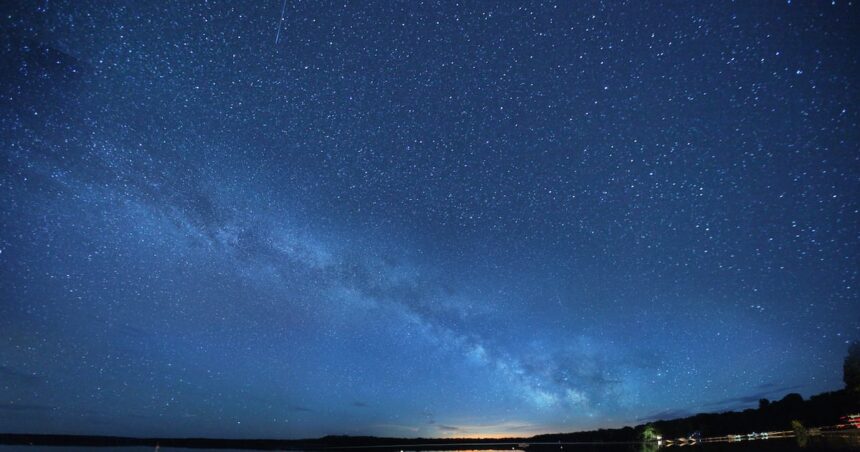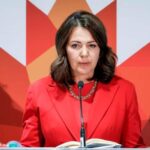I’ve just wrapped three days at the National Science Symposium where Canada’s Chief Science Advisor Dr. Mona Nemer unveiled what might be the most consequential government report on unidentified aerial phenomena our country has seen. The packed conference hall in Ottawa fell silent as she presented findings from a year-long investigation that’s already sending ripples through both scientific circles and Parliament Hill.
“What we’re seeing represents a genuine scientific mystery,” Dr. Nemer told the gathered researchers and media representatives. “These observations warrant serious scientific scrutiny, free from both excessive skepticism and unfounded speculation.”
The 217-page report, titled “Atmospheric Anomalies: A Scientific Assessment,” documents 236 credible sightings across Canadian airspace between 2020 and 2024. Most notably, 37 incidents involved corroborating evidence from multiple sensors and witnesses, including commercial pilots, military personnel, and weather station operators.
Transport Canada Captain Elise Tremblay, who contributed to the investigation, shared her own encounter during a northern surveillance flight in 2021. “We observed an object maintaining pace with our aircraft for approximately seven minutes. It demonstrated acceleration capabilities well beyond conventional aircraft,” she explained, adding that radar confirmed the presence of something substantial yet unidentifiable.
What distinguishes this report from previous government statements is its methodical approach and notable restraint. Dr. Nemer’s team avoids extraterrestrial speculation entirely, instead focusing on documented flight characteristics and potential technological explanations.
The report identifies four categories of unexplained phenomena: metallic craft exhibiting unprecedented maneuverability, luminous objects capable of instant acceleration, temporary atmospheric disturbances, and what they’ve termed “transmedium objects” moving between air and water environments.
Ottawa physicist Dr. Jean Belanger, who served on the advisory panel, emphasized the implications. “We’re documenting objects that appear to defy our current understanding of aerodynamics and propulsion. These observations deserve rigorous investigation, regardless of their origin.”
The findings have prompted NDP science critic Don Davies to call for establishing a permanent federal office dedicated to investigating these phenomena. “When our scientists and military personnel report encounters with technology that surpasses our capabilities, national security demands we understand what we’re dealing with,” Davies said in a statement yesterday.
According to internal documents obtained through access to information requests, the Department of National Defence has recorded 84 UAP incidents potentially involving objects of concern. DND spokesperson Major Claire Fortier confirmed that airspace monitoring systems have been enhanced at several NORAD-integrated facilities following recommendations from military advisors.
The report doesn’t just look skyward. It also examines ground effects, including electromagnetic interference with vehicle systems and temporary communication disruptions associated with sightings. In Thunder Bay, weather station technician Mark Oslowski documented equipment malfunctions coinciding with aerial phenomena in March 2023 – data that featured prominently in the case studies section.
Former RCMP intelligence analyst Sarah McIntosh, now with the Canadian Security Intelligence Service, told me the report represents a watershed moment. “We’re seeing a shift from treating these reports as fringe concerns to recognizing them as legitimate observational data that may have security implications.”
The recommendations section calls for establishing standardized reporting protocols across civilian aviation, military operations, and scientific monitoring stations. It also proposes allocating research funding through the Natural Sciences and Engineering Research Council specifically for atmospheric anomaly studies.
Public reaction has been mixed but largely supportive of scientific inquiry. A Leger poll conducted last month showed 63% of Canadians believe the government should investigate unexplained aerial phenomena, while only 17% consider such investigations a waste of resources.
Conservative MP Michael Chong, who serves on the parliamentary defence committee, has expressed cautious support. “While we shouldn’t jump to conclusions, we also can’t ignore patterns of observations from credible witnesses. National security requires we understand what’s operating in our airspace.”
For Indigenous communities in northern territories, these findings validate centuries of traditional knowledge. Dene elder Robert Alexie from Inuvik pointed out that stories of unexplained aerial phenomena have been part of oral histories long before modern documentation methods. “Our people have observed these visitors for generations. It’s good to see Western science finally catching up,” he remarked during the community feedback session.
As I walked through Parliament’s Centre Block yesterday, conversations among staffers suggested the report is gaining serious traction. Sources close to the Prime Minister’s Office indicated that a formal response is being prepared, potentially including funding for a dedicated research initiative.
For ordinary Canadians, the implications remain unclear but intriguing. Windsor resident and amateur astronomer Theresa Campbell told me she’s documented strange objects for years. “It’s validating to see scientists take this seriously. Whatever these things are, they’re real and they’re here.”
The report concludes with a sobering acknowledgment: we simply don’t have enough data to draw definitive conclusions about the nature or origin of these phenomena. But it firmly establishes that something worthy of scientific inquiry is occurring in our skies.
As Dr. Nemer put it in her closing remarks, “Science progresses by investigating the unexplained, not by ignoring it. Canada has an opportunity to lead in bringing rigorous methodology to questions that have too long been relegated to the fringes.”
The full report is available on the Office of the Chief Science Advisor’s website, with classified annexes provided to relevant security agencies. Public information sessions are scheduled in major cities throughout August.






